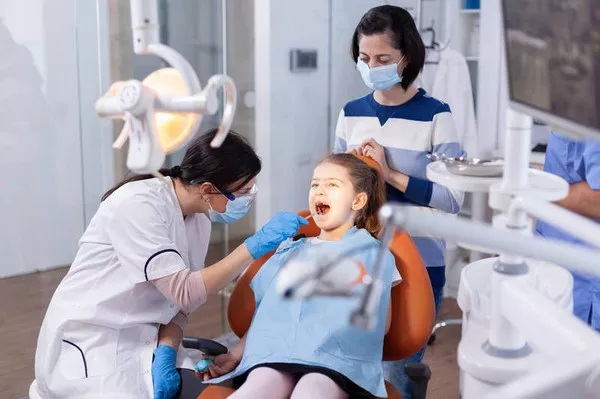An overbite is a common orthodontic condition where the upper front teeth overlap the lower front teeth when the mouth is closed. While some overbite is normal and even necessary for proper oral function, excessive overbites can lead to aesthetic and functional issues. In this article, we will explore what an overbite looks like, its different types, potential causes, and available treatment options.
Understanding Overbites
An overbite, also known as a malocclusion, occurs when the upper front teeth extend beyond the lower front teeth horizontally. This results in the upper teeth covering a portion of the lower teeth when the jaw is closed. Overbites are categorized into two main types:
Vertical Overbite: In a vertical overbite, the upper front teeth overlap the lower front teeth excessively in a vertical direction, creating a deep bite. This can cause the upper teeth to cover a significant portion of the lower teeth.
Horizontal Overbite: A horizontal overbite, also known as a “buck teeth” or a “protrusion,” occurs when the upper front teeth extend too far forward horizontally, creating a noticeable gap or misalignment between the upper and lower teeth.
What Does an Overbite Look Like?
The appearance of an overbite can vary depending on its severity and type:
Mild Overbite: In mild cases, an overbite may not be immediately noticeable. The upper front teeth may overlap the lower front teeth slightly, but the difference in appearance is minimal.
Moderate Overbite: A moderate overbite becomes more apparent as the upper front teeth overlap the lower teeth to a greater extent. This can result in a noticeable vertical or horizontal discrepancy between the upper and lower teeth.
Severe Overbite: Severe overbites are characterized by a significant overlap of the upper front teeth over the lower teeth, both vertically and horizontally. This type of overbite can have a pronounced impact on facial aesthetics and oral function.
Potential Causes of Overbites
Several factors can contribute to the development of overbites:
Genetics: Genetics play a significant role in determining the shape and size of a person’s jaw and teeth. Individuals with a family history of overbites may be more prone to developing them.
Thumb Sucking: Prolonged thumb sucking or pacifier use, especially beyond the toddler years, can push the upper front teeth forward, contributing to an overbite.
Tongue Thrusting: Habitual tongue thrusting against the front teeth can exert pressure and push them forward, leading to an overbite.
Early Tooth Loss: Losing primary (baby) teeth prematurely can disrupt the natural alignment of permanent teeth, potentially causing an overbite.
Jaw Irregularities: Irregularities in the size or shape of the upper or lower jaw can lead to overbites.
Treatment Options for Overbites
The treatment of overbites depends on their severity and underlying causes. Here are some common treatment options:
Orthodontic Treatment: Orthodontic devices like braces or clear aligners can effectively address overbites. They work by gradually moving the teeth into their proper positions. Invisalign and traditional braces are popular options for correcting overbites.
Orthognathic Surgery: In severe cases, especially when the overbite is due to jaw irregularities, orthognathic surgery may be recommended. This surgical procedure involves repositioning the upper or lower jaw to achieve a proper bite alignment.
Removable Appliances: In some cases, removable appliances such as headgear or bite plates may be used, especially in younger patients, to correct overbites.
Behavior Modification: In cases where overbites are exacerbated by habits like thumb sucking or tongue thrusting, behavior modification techniques may be employed to break these habits and encourage proper oral development.
Conclusion
An overbite can vary in appearance from mild to severe, with the upper front teeth either vertically or horizontally overlapping the lower teeth. Understanding the type and severity of the overbite is essential for determining the most appropriate treatment approach. If you or a loved one has an overbite, it’s advisable to consult with an orthodontist or dentist who can assess the condition, discuss treatment options, and help you achieve a healthy, functional, and aesthetically pleasing bite alignment. Early intervention can often lead to successful correction and improved oral health.
Related Topics:































